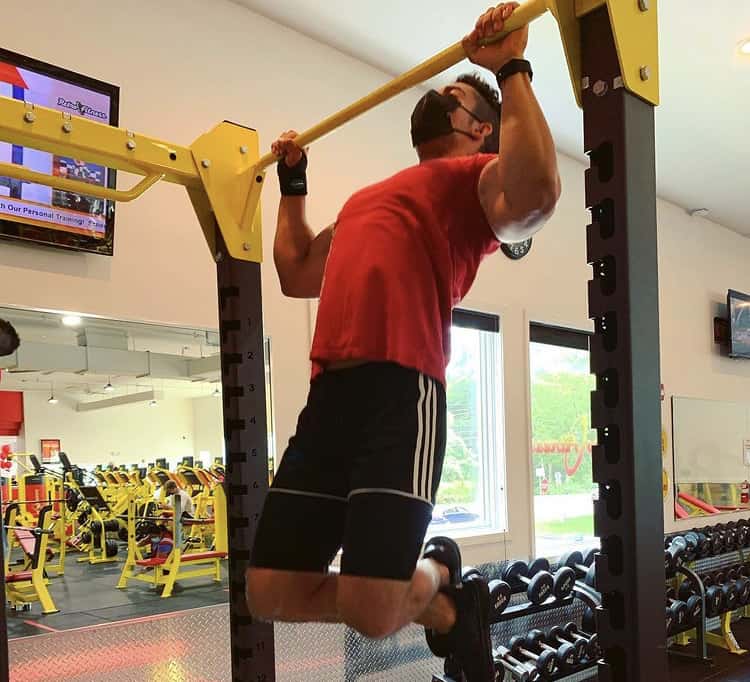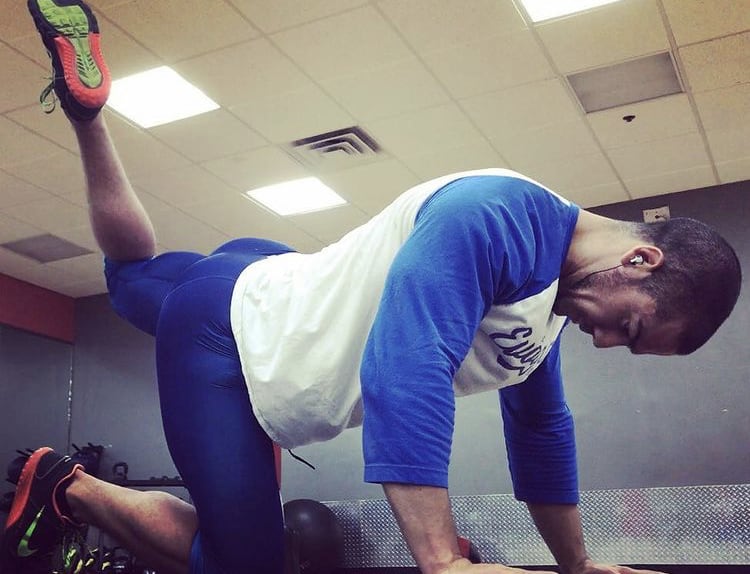
Calisthenics are exercises that utilize bodyweight as resistance and incorporate very little or no equipment at all. They range in difficulty from a simple bodyweight squat to a human flagpole, where the individual is suspended sideways in mid air with two hands on an upright pole.
Calisthenics are an appealing exercise modality since they can be done virtually anywhere with no monetary investment. A public park with monkey bars is a perfect setting for a workout. You could even get a good workout in the comfort of your home.
Many people use bodyweight routines as a means of staying fit, increasing range of motion, or improving flexibility. But are calisthenics a good way to build muscle?
Calisthenics build muscle to a certain degree. There will come a point where an individual’s bodyweight is not a large enough stimulus to build additional muscle for most exercises. So while calisthenics do build muscle, they are not the optimal way to do so.
What Causes Muscle Growth
The human body is adaptive to its surroundings and any stimulus placed upon it over time. When you learn a skill, like an instrument, new language, or sport, there is a learning curve. Initially the skill is challenging, but over time it becomes almost seamless. Think about the struggles of a small child learning to tie their shoes compared to an adult who can do so without even paying attention.
Building muscle is no different. The body adapts to force placed upon it by building new muscle. If the force does not stimulate the muscle enough, there is no growth.
This concept seems simple, yet millions of workout enthusiasts often reach a point where they plateau and can’t understand why. If you continue to do the same routine over and over, the body will adapt. Once it adapts, it has no reason to build muscle. If you want to build muscle, you need to give your body a reason to do so.
Limitations of Calisthenics
The easiest path toward muscle building progression is to increase the weight or the reps of an exercise. This is the biggest limitation of calisthenics with relation to building muscle. You can’t increase weight because there is no weight.
The natural response would be “I’ll just do more reps then.” It’s a reasonable answer, but at a certain point you are not going to add muscle by simply doing rep after rep. As mentioned, we need to stimulate the muscle to elicit growth. As an individual advances, there is a load threshold needed to build muscle that the body by itself cannot provide.
To do this you would add resistance in the form of dumbbells, barbells, cables, or bands. And at this point it isn’t a calisthenics exercise anymore.
This applies to certain exercises more than others. You can get away with doing conventional pull-ups for a long time and still build muscle because it is a challenging exercise. Unless you’re David Goggins, you will probably cap out at about 20 or 30 pull-ups per set.
For an exercise like bodyweight squats, you may reach a point where you could do 100 without too much fatigue. This is an example of where the load threshold of the human body just isn’t enough to build additional muscle, and you would have to squat using a barbell or dumbbells.

How to Incorporate Calisthenics in a Muscle Building Routine
Just because an exercise modality isn’t the optimal way to build muscle doesn’t mean you shouldn’t do it all. As mentioned, there are bodyweight exercises like pull-ups, dips, and planks that you could do forever without additional weight and still see gains.
Calisthenics can be used as a great warm-up tool for heavier lifts and on active recovery days to improve blood flow. They’re also great to implement to improve range of motion, something that can be lost when an individual only does heavy lifting.
Don’t confuse suboptimal for easy. Plenty of gym rats can’t do a pull-up and would be winded doing some bodyweight lunges down a football field. Being well-rounded is always a good thing.
Cross training is considered one of the best ways to stay healthy. Cross training is a fancy way of saying a variety of different fitness types. When you limit yourself to one aspect of fitness, there is always a tradeoff.
When you only lift heavy, you miss out on flexibility. When you only do yoga, you miss out on muscle hypertrophy. When you only bodybuild, you miss out on endurance. When you only do crossfit, certain muscle groups can be underdeveloped. But if you do a little bit of everything, you can limit your weaknesses.
Let’s consider an individual who already goes to a gym but wants to add some bodyweight movements to their routine. Perhaps they fit into the example alluded to earlier of someone who uses machines a little too often and lacks functional strength. The type of person who could barbell row 225lbs but can only crank out three pull-ups.
Adding just three to five sets of a bodyweight movement per workout would not only improve functional strength, it would also translate to better lifts on traditional bodybuilding exercises. Imagine adding three, one minute planks a few times per week. Over time the core would strengthen. Planks are a unique exercise that work the entire core and not just the rectus abdominis.
This would lead to better performance on military presses, bent over rows, and other exercises that require good posture. With stability no longer being a limiting factor, an individual would be able to utilize more weight with better form and thus put more force in the muscle. In the long run this would elicit muscle growth.
Recent Posts
Stretching Before Workouts: Essential Warmup or Performance Killer
“Don’t stretch before workouts, your muscles become too supple” “Stretch before your workouts, warming up is important” It's conflicting advice like this that drives people crazy,...
Best Protein Bar For the Money | Cost Effective, High Quality
Protein bars are no longer a supplement dedicated to diehard gym rats, with awful taste and the consistency of a brick. Men, women, and even teenagers can commonly be seen eating protein bars. The...
